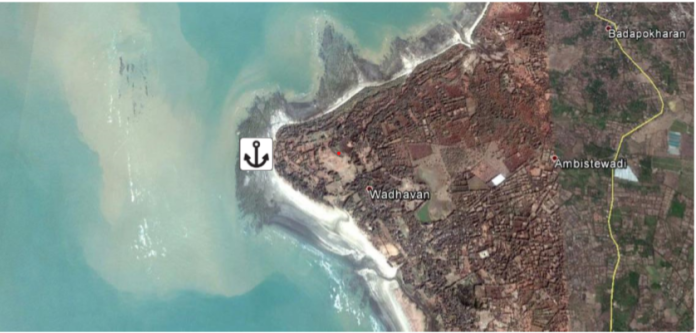Maharashtra will get another huge port built at a cost of around Rs 65,545 crore at Wadhavan, near Dahanu in Palghar district on the Gujarat border, catapulting India among countries with top 10 container ports in the world, an official said here on Wednesday.
The proposal to create the huge port – on a ‘landlord model’ – was cleared at a Union Cabinet meeting chaired by Prime Minister Narendra Modi on Wednesday.
A Special Purpose Vehicle (SPV) will be formed with Mumbai’s Jawaharlal Nehru Port Trust (JNPT) as the lead partner, with equity participation of at least 50 per cent to execute the Wadhavan Port project.
The SPV will develop the port infrastructure, including reclamation, construction of breakwater and establishing connectivity to the hinterland, while all the business activities will be undertaken on a PPP model by private developers.
Presently, JNPT is India’s biggest container port. With a traffic of 5.1 million Twenty-foot Equivalent Units (TEUs), it ranks 28th in the world.
After the completion of its fourth terminal, its capacity will increase to 10 million TEUs by 2023, making it the 17th biggest container port in the world.
However, with the development of Wadhavan Port – around 160 km northwest of JNPT – India will be catapulted among the countries with top 10 container ports.
There is a need for a deep draft port that can accommodate the largest container ships in the world and also cater to the spillover traffic after JNPT’s planned capacity of 10 million TEUs is fully utilised.
The JNPT and Mundhra Port, the two largest container ports in India, with a draft of 15 metres and 16 metres, respectively, can handle only mid-size ships, while the world’s largest container ports require a draft of 18-20 metres.
Situated in a picturesque coastal tract, the Wadhavan Port has a natural draft of around 20 metres close to the shore, making it ideal to handle modern big container vessels.
The development of Wadhavan Port will enable call of larger container vessels of 16,000-25,000 TEUs capacity, giving advantages of economies of scale and reducing logistics costs.
Maharashtra has two major ports i.e. Mumbai and JNPT which cater the hinterland of Maharashtra, including NCR, Punjab, Rajasthan and UP.
Out of these ports, Mumbai port has constraint in evacuation of cargo for the past several decades due to development of city around it also due to availability of limited depths in the harbour.
JNPT was basically developed as a satellite port of Mumbai port and has coped up well in becoming the largest container port of the country. Presently, the JNPT caters to the hinterland of Maharashtra, north Karnataka, Telangana and the secondary hinterland of Gujarat, Madhya Pradesh, Rajasthan, Delhi, Punjab and Uttar Pradesh.
The container traffic in the JNPT hinterland is expected to grow up to 10.1 million TEUs by 2022-2025, which will be its saturation point.
The development of 4th container terminal in JNPT is underway and after its full development there is little space for further expansion. Apart from that due to the presence of bed rock at or very close the existing bed level JNPT cannot be deepened further economically to handle the future generation of mega container ships drawing draft of 16 m or more.
(With Inputs From IANS)


